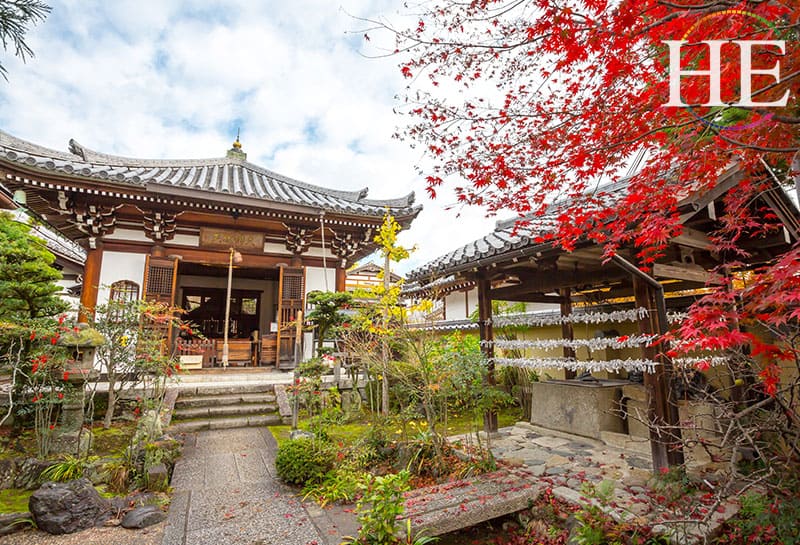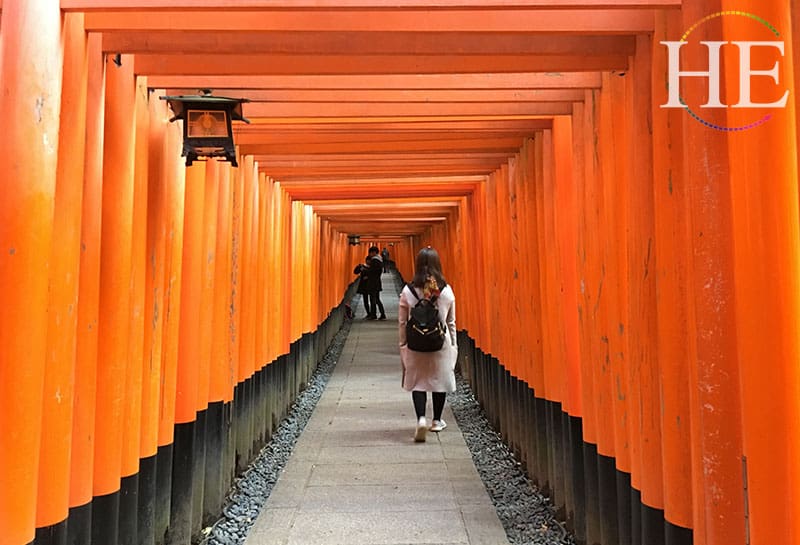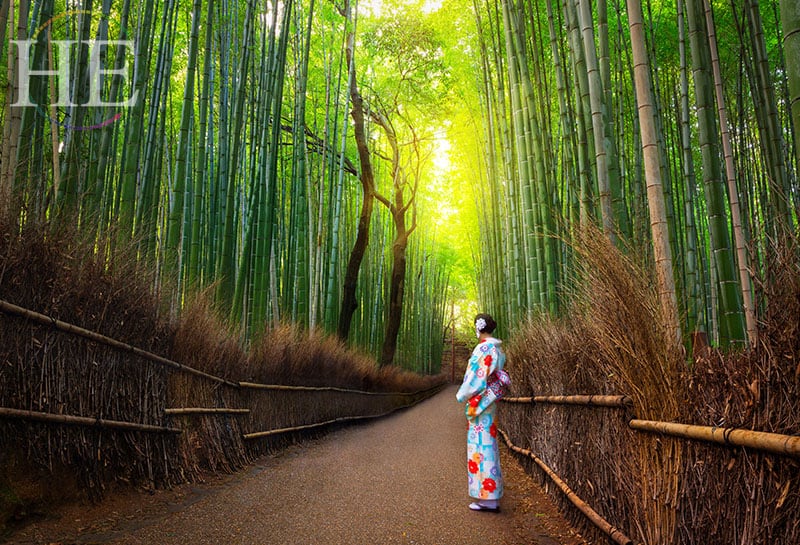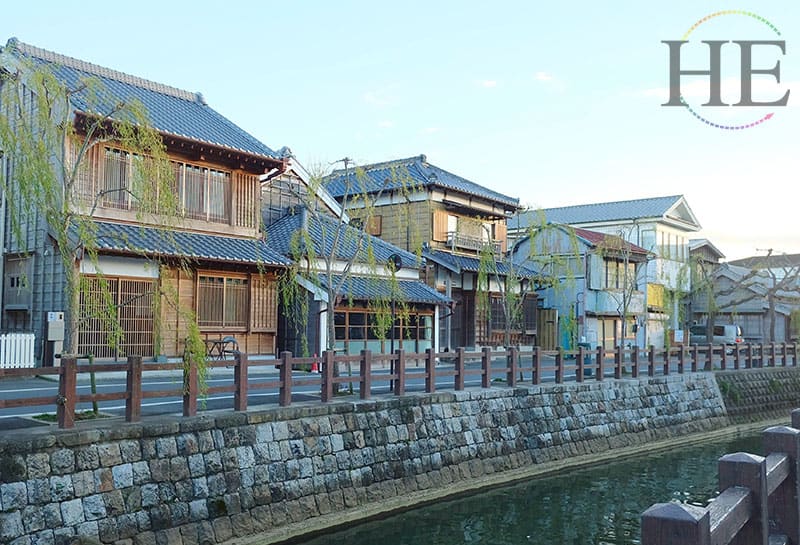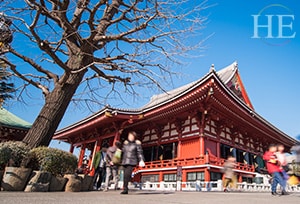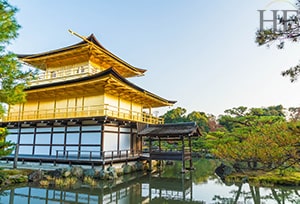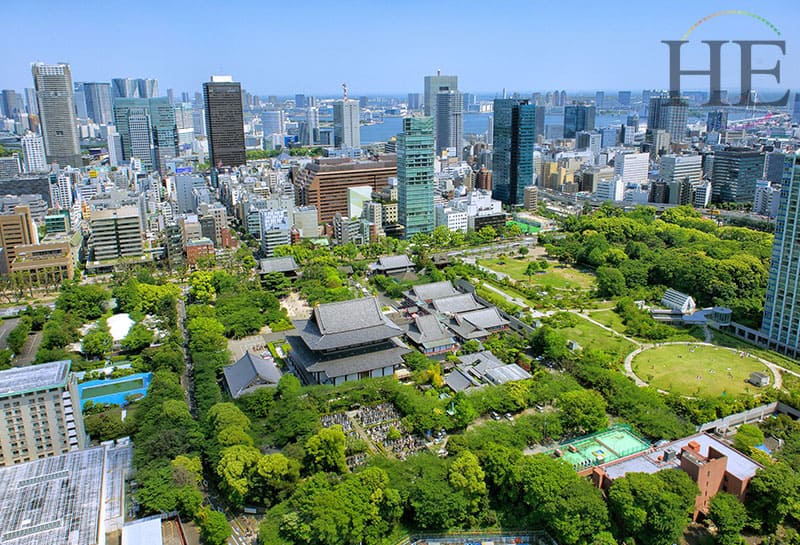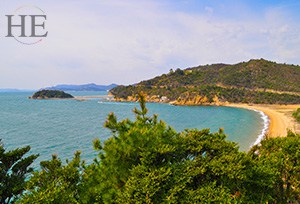Japan Gay Cultural Tour
A Gay Travel Japan Cultural Tour
Prices listed are per person:
Shared Room: $8,888
Private Room: $11,188
Our gay Japan tour starts in modern Tokyo, then spends two nights in the traditional samurai village of Takayama. Next is Kyoto, with its abundance of temples and gardens and a visit to an art museum built into a hillside. Our unique Extension visits either the world-renowned Benesse Art Site on Naoshima Island or the beautiful remote lush Iya Valley (depending on the year) and Hiroshima to see both the solemn Peace Park and beautiful Miyajima Island.
Highlights
Explore Japan’s bustling capital city of Tokyo.
Relax in the traditional mountain village of Takayama
Stroll through Kyoto, one of the most beautiful cities in all of Japan.
See the famous Golden Pavillion at the Kinkakuji Temple.
Meditate in the Tenryuji Temple garden.
Climb up to the tower of Himeji Castle, the best-preserved samurai castle in Japan during our Extension.
Visit Naoshima Island, home of the renowned Benesse Art Site, perhaps Japan’s leading home of modern art OR
Explore the mysterious remote Iya Valley including its scarecrow village.
Contemplate the historic significance of Hiroshima, then tour Miyajima Island whose Shinto gate is at sea or on land, depending on the tide during our Extension.
NOTE: the 2025 tour concludes with an extension to the Iya Valley and Hiroshima, then an extension to the Buddhist monasteries of Koya-san and Osaka.
Overview
Enjoy the Culture and Natural Beauty of Japan
Let us show you authentic corners of Japan that reflect the diversity of that proud and ancient land, both ancient and modern, both urban and surrounded by nature. From colorful kimonos to delicate calligraphy, glorious temples to perfectly prim gardens, indelible images of Japan will remain imprinted in your memory once you experience the real Japan. We’ll explore lively Tokyo, visit the traditional Japanese mountain village of Takayama, enjoy Kyoto’s abundance of history, and on our Extension explore the Hidden Valley of Iya and contemplate what Hiroshima means to the people who live there.
Itinerary
Map:
Day 1: Welcome to Tokyo
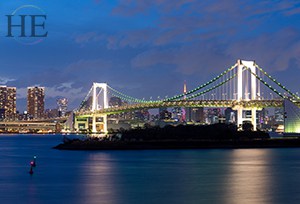
Passengers from North America will cross the International Dateline and arrive in Japan a day after departure from home. After the long flight, the rest of the day is at leisure but our HE Travel tour director will offer suggestions for those who arrive early. The upcoming days will be very exciting.
Days 2-3: Tokyo Touring
Tokyo is one of the most interesting and most complicated cities in the world. Over two days we will enjoy guided tours including imperial gardens, museums, and ancient shrines. Our Welcome Dinner will be at a restaurant highlighting traditional Japanese cuisine. In either Tokyo or Kyoto, we will be entertained by a professional geisha (and perhaps even one of the few male geishas in Japan!).
Days 4-5: Samurai Mountain Village of Takayama
Today we use Japan’s amazing rail system to go to the mountain village of Takayama, with warehouses that date to Samurai times.
We will stay at a Japanese ryokan, with western beds. Relax in the hot spring pools of our hotel. Later, put on your yukata robe for our special kaiseki dinner, highlighting the vegetables and beef from this mountain region of Hida.
During our time in Takayama we will visit the Miyagawa Riverside Morning Market and have free time to explore several blocks of shops and homes in the Old Town Warehouse District. After lunch in a French bistro, we will see the festive karakuri floats of the Takayama Yatai Kaikan and other sites.
Day 6: Trains to Kyoto
After a leisurely start to the day, we will depart for Kyoto, Japan’s classic capital city, by a mix of local and bullet trains. Upon arrival, we’ll check into our deluxe hotel for the next four nights, and our guide will give an orientation to what we’ll see in Kyoto.
Day 7: Arashiyama and Kinkakuji in Western Kyoto
Today is a full day of sightseeing, starting in Arashiyama in western Kyoto, a fascinating part of the city missed by most Western visitors.
NOTE: The locations listed are our planned stops. However, we may substitute other stops based on weather, congestion, and other local factors.
Our first stop today is to the gardens of Tenryuji Temple. This UNESCO World Heritage Site is famous for its gardens, thought to be the oldest in Kyoto, dating to the 14th Century. Their stylish restaurant offers delicious Buddhist vegetarian meals, so we’ll stop there for lunch.
After lunch, we’ll take a rickshaw ride around the temple precincts and through a lush bamboo grove.
Today’s tour concludes at Kinkakuji Temple, a stunning gold-covered pavilion originally built in 1393. A great photo opportunity is the image of the Golden Pavilion reflected in the tranquil waters of the lake. It was made famous in the book Temple of the Golden Pavilion by gay Japanese writer Yukio Mishima. He wrote of rivalries among monks, including one who burned down the temple.
Day 8: Miho Museum
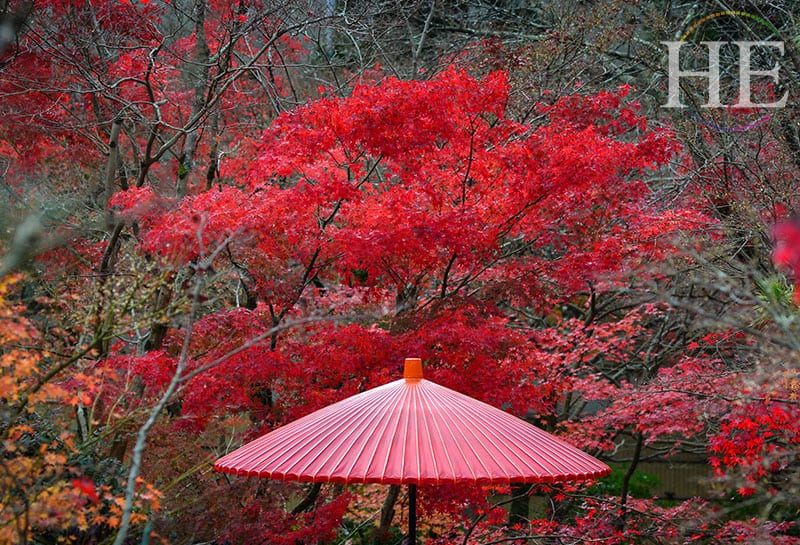
Today we head north of Kyoto to the exquisite Miho Museum. The building was commissioned by a Japanese religious group and designed by I.M. Pei. The museum blends into the surrounding forest by being built mostly inside a mountain. One approaches the museum through a graceful pedestrian tunnel and an extraordinary suspension bridge.
The museum displays a permanent collection of statues and artifacts from ancient civilizations, along with seasonal exhibits of Japanese art. Following our visit to the Miho Museum, we will return to Kyoto. The rest of the day will be free to explore additional temples and castles, take a train up into the mountains, or enjoy the amenities of our deluxe hotel.
Day 9: Higashiyama District of Kyoto
After two days of savoring a great variety of sights, we will tour the Eastern Hills or Higashiyama area of Kyoto, then offer free time to explore Kyoto at your leisure. You can sample everything from quaint shops to ultramodern department stores to see the blend of tradition and progress.
We will have the farewell dinner of our main tour in a unique restaurant nestled in the hills of Higashiyama.
Day 10: Farewell to Japan or Begin Himeji-Iya Valley-Hiroshima Extension
Today, those joining just the main tour will catch flights from one of Osaka’s airports to begin the journey home. For those with more time, see the Extensions tab for information about our 4-night extension to Himeji Castle, remote Iya Valley, and Hiroshima. Following that extension our Koyasan Extension offers one-night in a Zen monastery on Koya-san, followed by a night in Osaka.
Price Includes
Main Tour
Price includes: Land transportation within Japan; Deluxe hotel rooms, in double occupancy; A limited number of private rooms for single occupancy are available; Breakfast each day and other meals as shown in the itinerary; Guided tours of Tokyo, Takayama, and Kyoto; Shipment of one piece of luggage from Tokyo to Kyoto (NOTE: luggage will be shipped due to minimal luggage space on Japanese trains); Services of a knowledgeable HE Travel tour host (with a minimum number of participants); Hotel services charges, taxes, and gratuities for included meals. HE Travel provides complimentary Medical & Evacuation Insurance for every US Resident on our group tours who does not have other coverage.
Not included: Airfare; Transfers between airports and hotels at start and end of the tour (but with recommendations for efficient and inexpensive transfers); Meals not described as being included in the itinerary; Personal items including alcoholic beverages, snacks, laundry, and telephone calls. Gratuities to local guides and HE Travel tour director.
Himeji, Iya Valley & Hiroshima Extension
$3190 per person in a shared room
$3890 in a private room (for solo travelers who wish to enjoy a private bedroom and bathroom)
Price includes: bus, train, and ferry transportation; two nights at a deluxe Iya Valley ryokan and two nights in Hiroshima, including breakfast; two lunches and two dinners; guide and admission fees for tours of Himeji Castle, Iya Valley locations, Hiroshima Peace Memorial Park and Miyajima.
Price does not include: two lunches and two dinners; gratuities to guides; personal expenses such as souvenirs and beverages.
Koyosan Monastery Extension
$1690 per person in a shared room
$1890 per person sharing a Japanese-style room at Koya-san and with a private room in Osaka
$1990 in a private room (for solo travelers who wish to enjoy a private bedroom and bathroom in both locations)
Price includes: land transportation from Hiroshima to Koyasan and back to Osaka; bus pass for Koyasan; one night in Japanese-style room at Koyasan monastery including dinner and breakfast; one night at the hotel in central Osaka including breakfast; guide and admission fees for Koyasan touring.
Price does not include: two lunches and one dinner; gratuities to guides; personal expenses such as souvenirs and beverages.
Extensions
Four-Night Himeji Castle, Iya Valley, & Hiroshima Extension – November 10-14, 2025
Note for 2025: due to a large event making the Benesse Art Site on Naoshima Island very crowded, we will instead visit the enchanting, remote Iya Valley on Shikoku Island.
Day 10: Himeji Castle and Iya Valley
We will drive from Kyoto to Himeji Castle (time permitting), considered the finest samurai castle still standing in Japan. After lunch, we will drive across one of Japan’s largest bridges to Shikoku Island, then on to the rarely visited Iya Valley. We will check into our ryokan lodging for a 2-night stay in a narrow misty valley.
Day 11: Iya Valley Touring
After breakfast, we will start our exploration of the Iya Valley, which proudly calls itself one of Japan’s most scenic “hidden valleys”. For decades, young people moved away, leaving behind the unique heritage of this rugged area, and a rich legacy of hospitality.
First, we will visit Chiiori, a traditional Japanese house restored by American Alex Kerr (subject to availability). Then we will wind up a narrow mountain road for a panoramic view of Ochiai village, known for its houses cascading down a steep hillside.
We’ll stop for lunch at a tiny restaurant that offers instruction on making soba from wheat flower, then tops it off with tempura using vegetables grown nearby. Our hostess is an energetic elderly woman who has won prizes for her folk singing.
After lunch we’ll drive to the Nagoro Doll Village where we will gaze at the life-size “scarecrow” dolls scattered around the village. They represent past residents of this mostly depopulated town and other notable figures. The artist returned home from the big city to care for her ailing father 20 years ago and continually adds new dolls to the landscape.
We’ll get a little exercise to end the day, crossing a pair of bridges made of wisteria vines, and reinforced with steel cables. Exiles from Kyoto’s Heike Clan built these bridges 800 years ago while hiding from their victorious samurai foes. They provided a safe crossing over the rushing river but could be easily cut if they needed to escape from attackers.
We’ll return to our inn for dinner and a chance to enjoy the hot springs onsen experience.
Day 12: Hiroshima Peace Park
This morning, we’ll take a local train through the Iya gorges, then across the Seto Ohashi set of bridges to Okayama. From there, it is a short bullet train ride to Hiroshima. Once there, we will transfer to our deluxe hotel for a 2-night stay.
In the afternoon of this or the next day, we will have a reflective tour of the Hiroshima Peace Memorial Park. We will see school children presenting “1000-crane” origami displays which have long symbolized hope and healing. Along the river is the Atomic Bomb Dome, an exhibition hall until the bomb fell. It is retained as a memorial to those who lost their lives on that fateful day. We will visit the well-presented but somber Peace Park Museum at our own pace, as well as an origami museum.
Day 13: Miyajima
This day offers a contrasting setting of the region’s natural beauty and religious heritage on nearby Miyajima Island. The island is most famous for the massive “torii” gate of the Itsukushima Shinto Shrine. At low tide, the gate is connected by mudflats to the rest of the island, but at high tide, the gate rises majestically out of the sea. The native population of small deer wanders around the entire village.
Time and weather permitting, we will take the Miyajima Ropeway up to Mount Misen, from which we can get panoramic views of the Inland Sea. Mount Misen is honored by devout Buddhists, since Kobo Daishi, founder of Koyasan, established a monastery there in 806 AD.
We will take a boat back to our hotel, and the evening is on our own.
Day 14: Departure or Begin Koyasan Extension
This day is at leisure until time to transfer to Hiroshima Airport or the train station to start home. Those with more time can join us for the Koyasan Monastery Extension.
Two-Night Koyasan Monastery Extension – November 14-16, 2025.
This extension follows the Iya Valley and Hiroshima Extension.
Day 14: Travel from Hiroshima to Koyasan Monastery via Osaka
Our visit to the sacred Buddhist mountain of Koyasan begins with trains and a funicular from Hiroshima to Koyasan. We will drop our bags at the monastery where we will stay in comfortable rooms with tatami mats (and heating!). In the afternoon, we will walk through Okunoin Cemetery to see the mausoleum of the founder of Shingon Buddhism, who died in 835 AD.
We’ll have a special vegetarian dinner at our monastery.
Day 15: Explore Koyasan and Return to Osaka
At dawn, we will have an invitation to observe ceremonies led by the monks of our temple. After breakfast, we will visit two of the most picturesque temple complexes of this sacred mountain setting, likely with autumn leaves at their peak!
After lunch at a Koyasan restaurant, we will return to Osaka for one night before flights home.
Day 16: Homeward Bound!
Today you will head to Osaka’s Itami domestic airport or KIX international airport or take a bullet train to one of Tokyo’s airports to start your journey home.
Tour Insurance
We strongly recommend the purchase of Trip Cancellation and Interruption insurance to protect your vacation investment in case of unforeseen circumstances such as flight delay, illness, or injury. Click Here to learn more about our Insurance partner.

